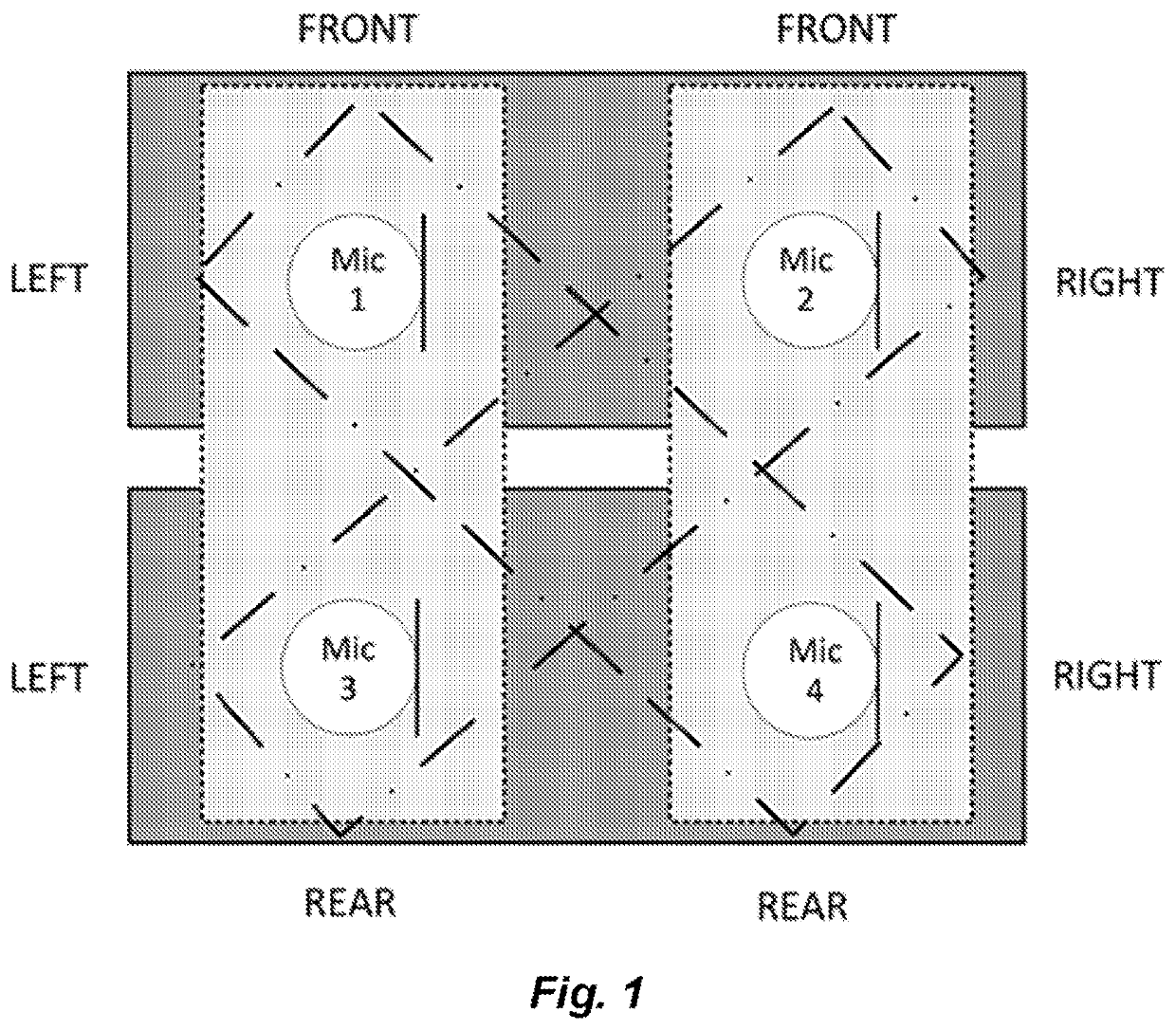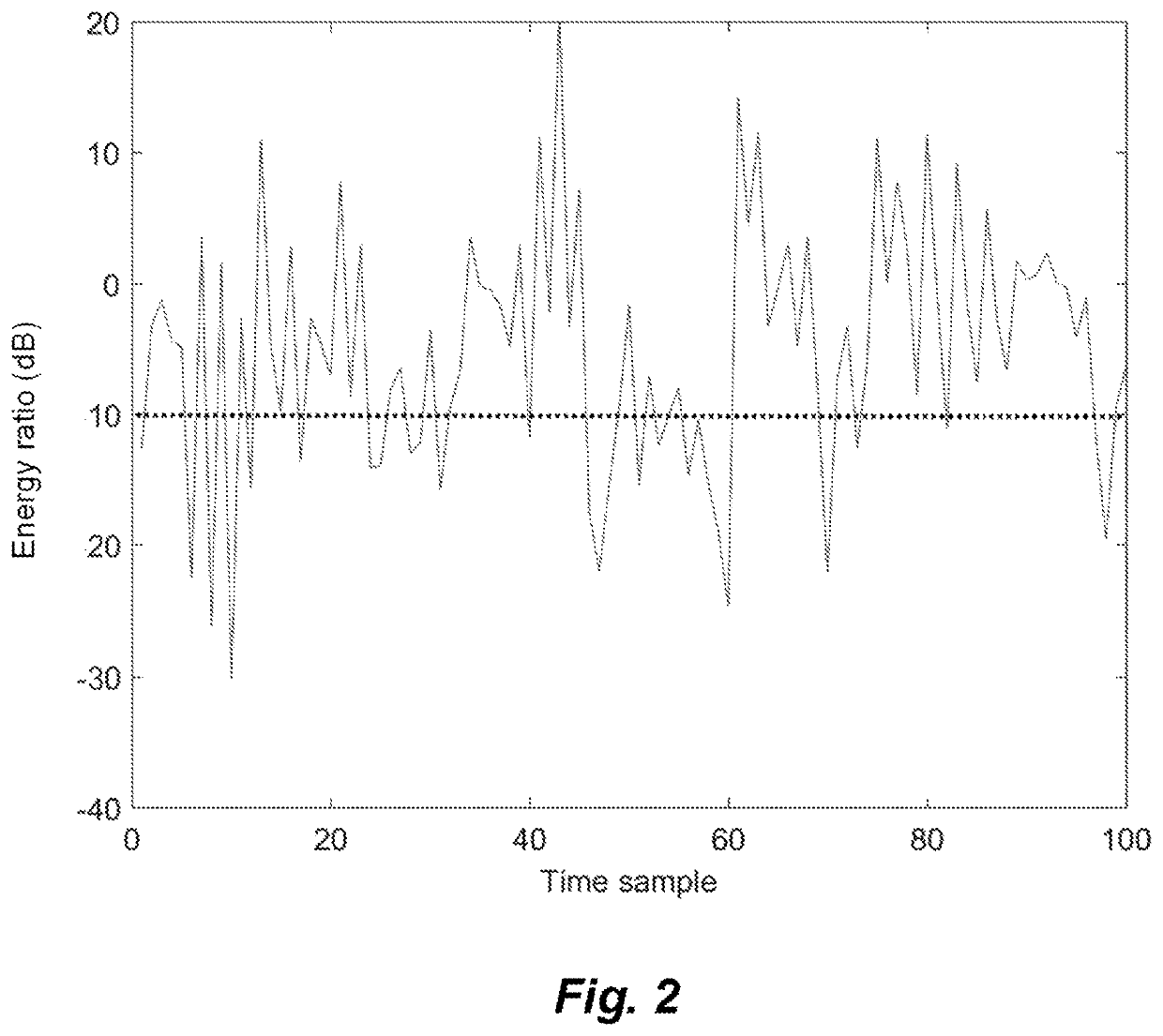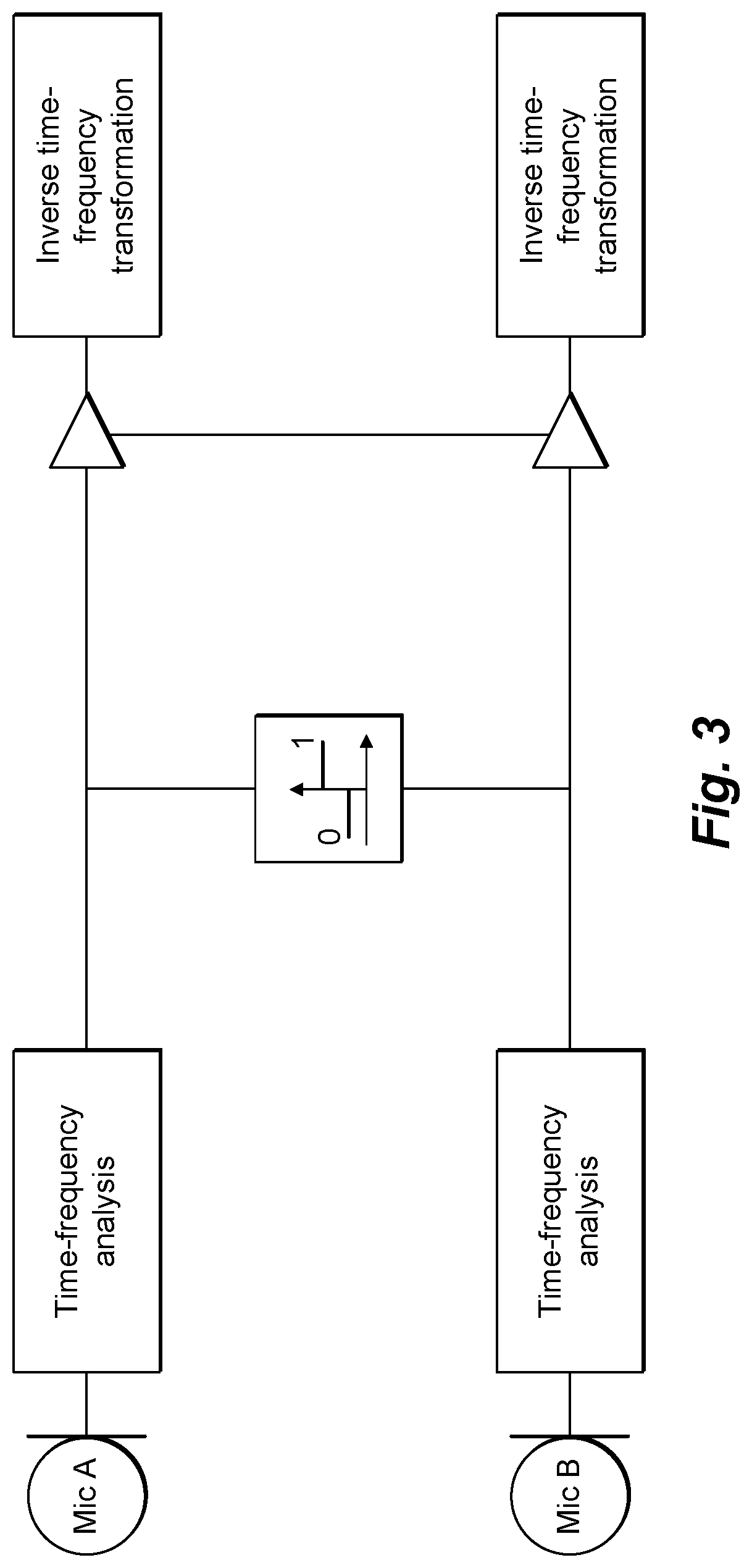Dual-microphone methods for reverberation mitigation
a dual-microphone and reverberation technology, applied in the direction of frequency/directions obtaining arrangements, speech analysis, instruments, etc., can solve the problems of inability to achieve practical implementation in a hearing assistive or other device, inability to guarantee realistic scenarios, and degrade the overall speech quality, etc., to achieve the effect of reducing the reverberation components
- Summary
- Abstract
- Description
- Claims
- Application Information
AI Technical Summary
Benefits of technology
Problems solved by technology
Method used
Image
Examples
Embodiment Construction
[0021]Various embodiments of the present invention are directed to techniques for dual microphone signal processing to reduce reverberation. Although the following is described in the specific context of two microphone signals, it will be understood that the invention is not limited in that regard, and may equally be applied to contexts with more than two microphones. For example, as shown in FIG. 1:[0022]Mic A=Mic 1 and Mic B=Mic 3, referred to as a front-left and rear-left configuration[0023]Mic A=Mic 2 and Mic B=Mic 4, referred to as the front-right and rear-right configuration[0024]Mic A=Mic 1 and Mic B=Mic 2, referred to as the front-left and front-right configuration[0025]Mic A=Mic 3 and Mic B=Mic 4, referred to as the rear-left and rear-right configuration[0026]Mic A=Mic 1 and Mic B=Mic 4, referred to as the front-left and rear-right configuration[0027]Mic A=Mic 2 and Mic B=Mic 3, referred to as the front-right and rear-left configuration.
[0028]Two time domain microphone sign...
PUM
 Login to View More
Login to View More Abstract
Description
Claims
Application Information
 Login to View More
Login to View More - R&D
- Intellectual Property
- Life Sciences
- Materials
- Tech Scout
- Unparalleled Data Quality
- Higher Quality Content
- 60% Fewer Hallucinations
Browse by: Latest US Patents, China's latest patents, Technical Efficacy Thesaurus, Application Domain, Technology Topic, Popular Technical Reports.
© 2025 PatSnap. All rights reserved.Legal|Privacy policy|Modern Slavery Act Transparency Statement|Sitemap|About US| Contact US: help@patsnap.com



